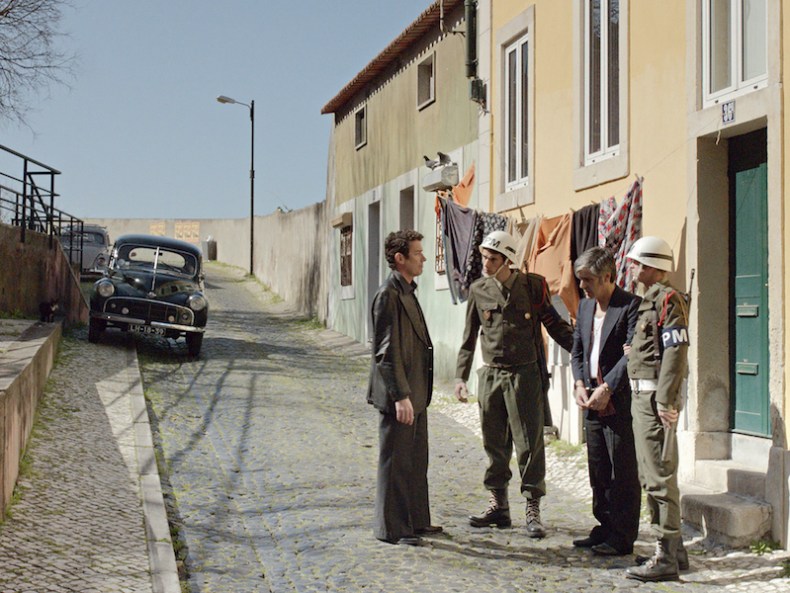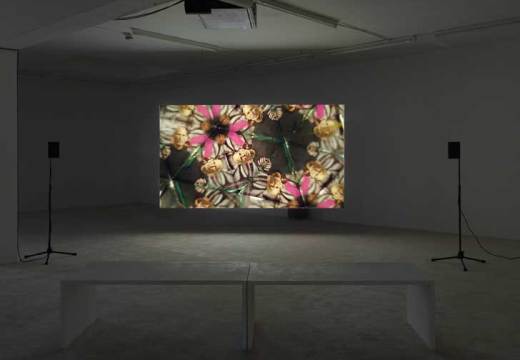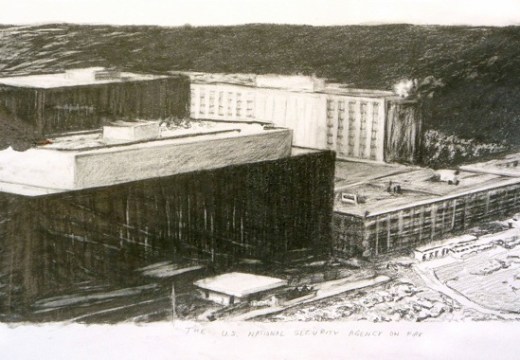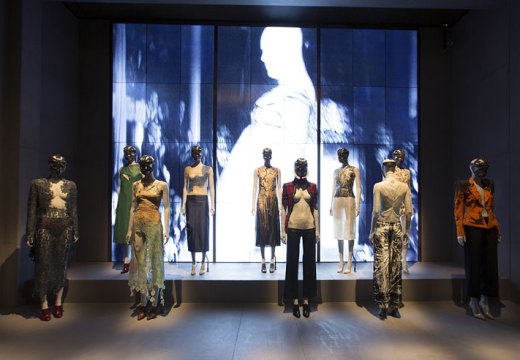The Secret Agent, a new multi-screen film installation by Canadian artist Stan Douglas, is an adaptation of Joseph Conrad’s 1907 novel of the same name. Douglas’ film, however, transposes the action of Conrad’s chilling tale of British espionage, terrorism and murder from its 1886 London setting to 1970s Portugal. The film takes place in the aftermath of the 1974 Carnation Revolution – a non-violent revolt that managed to successfully depose the Estado Novo, Europe’s longest-standing authoritarian regime. Adopting the guise of a classic Cold War spy thriller (the artist routinely cites Hitchcock as a seminal influence on his work), The Secret Agent unfolds an intentionally clunky and disjointed narrative of political unrest and intrigue across six large projection screens. These occupy the entire upper level of the Victoria Miro Gallery, providing the spectator with an immersive viewing experience.

Installation view of ‘Stan Douglas: The Secret Agent’, Victoria Miro. Courtesy the Artist, David Zwirner, New York / London and Victoria Miro, London; © Stan Douglas
Accompanying The Secret Agent on the gallery’s lower floor is a series of four large-scale, digitally rendered photographs (Hogan’s Alley [2014], The Second Hotel Vancouver [2014], Bum Town [2015], Lazy Bay [2015]) that depict the seedy underbelly of a largely forgotten post-war North American cityscape. Populated by dilapidated hotels and dimly-lit alleyways, the photographs mimic the conventions of film noir (another important touchstone for Douglas) while also suggesting a story of simmering racial tensions and the skid-row politics of Vancouver, the artist’s native city, around 1948.

The Secret Agent (film still; 2015), Stan Douglas. Courtesy the Artist, David Zwirner, New York / London and Victoria Miro, London; © Stan Douglas
Douglas is internationally celebrated for his conceptually complex and technically virtuosic video works that re-examine pivotal historical and cultural moments. The Secret Agent both continues and further develops this approach. Shot entirely in Lisbon with Portuguese actors, the locations, costumes and props selected by Douglas lend the film an unsettling sense of historical accuracy that is continually undermined by the film’s deliberate tendency toward melodrama. Standing literally within the film, surrounded by six screens, the viewer is forced to switch their gaze back and forth as images black-out, sequences are repeated and characters walk from one frame into another. It is impossible to follow everything that is happening at once, with certain scenes appearing to occur concurrently. The disjointed nature of the storytelling is part of Douglas’ strategy to urge the viewer to rethink what is happening and to consider other potential outcomes from the events that they are witnessing.

Installation view of ‘Stan Douglas: The Secret Agent’, Victoria Miro. Courtesy the Artist, David Zwirner, New York / London and Victoria Miro, London; © Stan Douglas
The themes of racism, terrorism, poverty, anarchy and revolt not only meaningfully link Douglas’ photographs and film in the exhibition, but are prescient given the 2015 Ferguson and Baltimore race riots in the US. Conrad’s novel was the first work of literature to openly address terrorism and the government’s response to its threats. In both Conrad’s story and Douglas’ film, the protagonist, Mr Verloc, is the leader of an anarchist cell; unbeknownst to his comrades he is also in the employ of an embassy (Russian in Conrad’s novel and American in Douglas’ film) as a spy. In each case, a young relative of Verloc (a brother-in-law in the novel, a stepson in the film) is embroiled in the plot and meets his accidental death in the process. Surfacing as a compelling theme in the works of both Conrad and Douglas is the ambiguous, murky nature of international politics and the innocent lives claimed by its subterfuge.

The Secret Agent (film still; 2015), Stan Douglas. Courtesy the Artist, David Zwirner, New York / London and Victoria Miro, London; © Stan Douglas
‘Stan Douglas: The Secret Agent’ is at Victoria Miro until 24 March.
Unlimited access from just $16 every 3 months
Subscribe to get unlimited and exclusive access to the top art stories, interviews and exhibition reviews.














![Masterpiece [Re]discovery 2022. Photo: Ben Fisher Photography, courtesy of Masterpiece London](http://www.apollo-magazine.com/wp-content/uploads/2022/07/MPL2022_4263.jpg)
Has arts punditry become a perk for politicos?